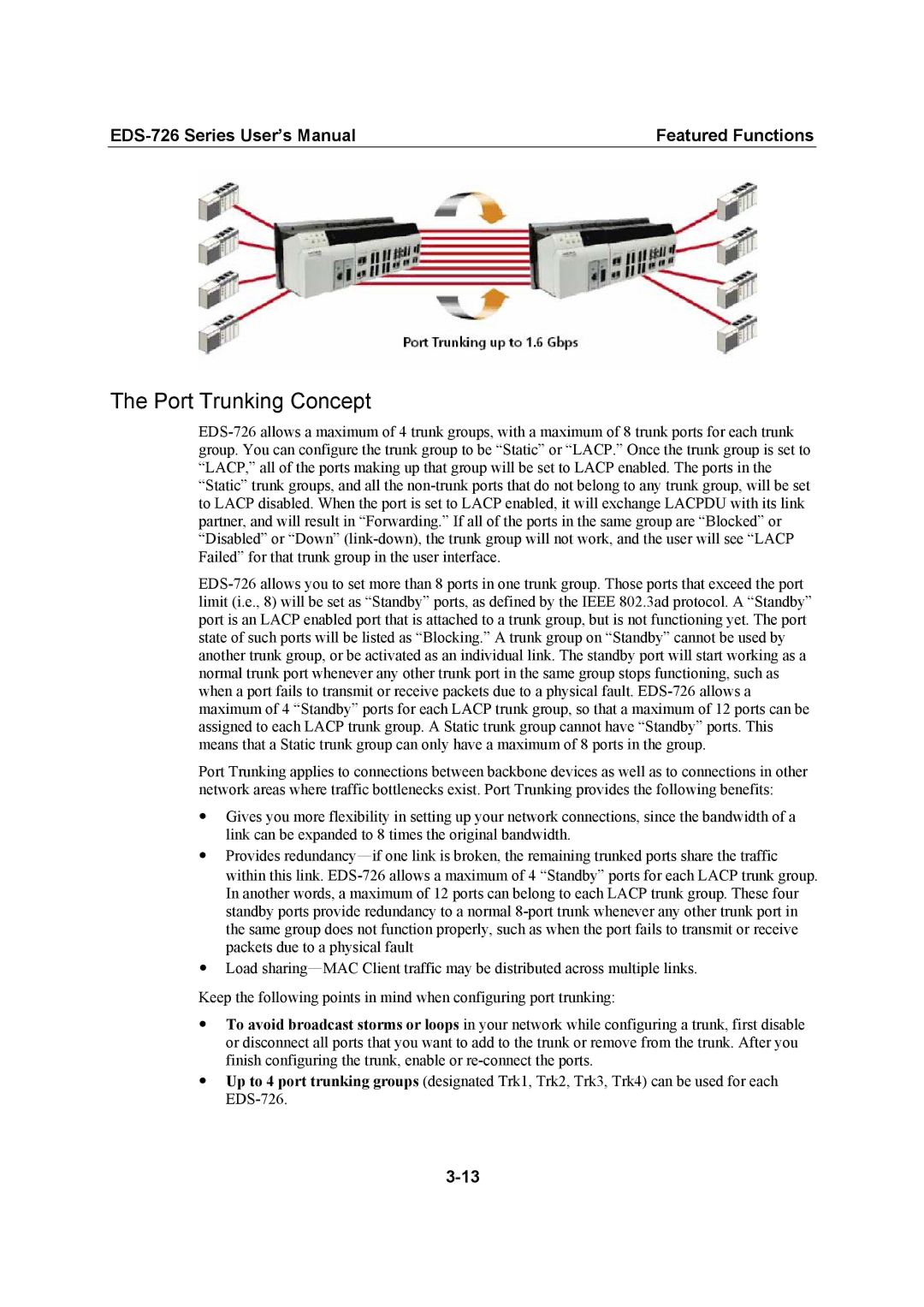EDS-726 Series User’s Manual | Featured Functions |
The Port Trunking Concept
EDS-726 allows a maximum of 4 trunk groups, with a maximum of 8 trunk ports for each trunk group. You can configure the trunk group to be “Static” or “LACP.” Once the trunk group is set to “LACP,” all of the ports making up that group will be set to LACP enabled. The ports in the “Static” trunk groups, and all the non-trunk ports that do not belong to any trunk group, will be set to LACP disabled. When the port is set to LACP enabled, it will exchange LACPDU with its link partner, and will result in “Forwarding.” If all of the ports in the same group are “Blocked” or “Disabled” or “Down” (link-down), the trunk group will not work, and the user will see “LACP Failed” for that trunk group in the user interface.
EDS-726 allows you to set more than 8 ports in one trunk group. Those ports that exceed the port limit (i.e., 8) will be set as “Standby” ports, as defined by the IEEE 802.3ad protocol. A “Standby” port is an LACP enabled port that is attached to a trunk group, but is not functioning yet. The port state of such ports will be listed as “Blocking.” A trunk group on “Standby” cannot be used by another trunk group, or be activated as an individual link. The standby port will start working as a normal trunk port whenever any other trunk port in the same group stops functioning, such as when a port fails to transmit or receive packets due to a physical fault. EDS-726 allows a maximum of 4 “Standby” ports for each LACP trunk group, so that a maximum of 12 ports can be assigned to each LACP trunk group. A Static trunk group cannot have “Standby” ports. This means that a Static trunk group can only have a maximum of 8 ports in the group.
Port Trunking applies to connections between backbone devices as well as to connections in other network areas where traffic bottlenecks exist. Port Trunking provides the following benefits:
yGives you more flexibility in setting up your network connections, since the bandwidth of a link can be expanded to 8 times the original bandwidth.
yProvides redundancy—if one link is broken, the remaining trunked ports share the traffic within this link. EDS-726 allows a maximum of 4 “Standby” ports for each LACP trunk group. In another words, a maximum of 12 ports can belong to each LACP trunk group. These four standby ports provide redundancy to a normal 8-port trunk whenever any other trunk port in the same group does not function properly, such as when the port fails to transmit or receive packets due to a physical fault
yLoad sharing—MAC Client traffic may be distributed across multiple links.
Keep the following points in mind when configuring port trunking:
yTo avoid broadcast storms or loops in your network while configuring a trunk, first disable or disconnect all ports that you want to add to the trunk or remove from the trunk. After you finish configuring the trunk, enable or re-connect the ports.
yUp to 4 port trunking groups (designated Trk1, Trk2, Trk3, Trk4) can be used for each EDS-726.

